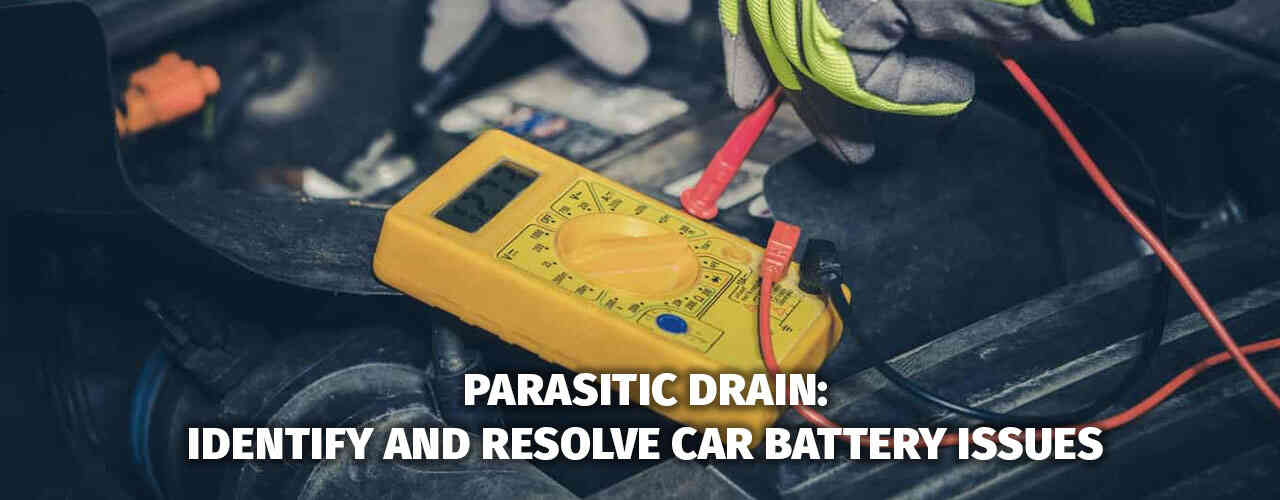The parasitic drain, oh my! Every car owner's worst fear. If your automobile battery fails you often, even after being charged, you most likely have a parasitic drain. But how do you identify it? That, my friends, is the million-dollar question. We go into How to Diagnose Parasitic Drain on Your Car Battery in this all-inclusive tutorial, unravelling the riddle in a method that's as simple as ABC
The process of diagnosing parasitic drain on a car battery can be divided into a series of steps. This is not a task to be taken lightly. You must be thorough and systematic, employing patience and caution. It's like being a detective on a crime scene you must pay attention to every detail to solve the puzzle. Let's get started!
Understanding Parasitic Drain: The Silent Culprit
Parasitic drain, also referred to as parasitic load or draw, happens when your car's electrical devices continue to suck power from the battery even when the ignition is off. This slow, steady bleed can leave your battery unable to start your vehicle leading to frustrating mornings and potential towing expenses. Understanding parasitic drain is the first step towards diagnosing it.
Identifying Signs of a Parasitic Drain
To make an accurate diagnosis, you need to recognize the symptoms. Is your battery unable to maintain a charge even after repeated charging? Are you noticing an unusual need for jump-starts? Are your vehicle's lights dimmer than usual? These are clear signs that a parasitic drain could be the culprit.
The Tools You Need: Preparing for the Investigation
Before you go playing Sherlock Holmes with your vehicle, you'll need to gather the necessary tools. Key among these is a digital multimeter which will measure the drain and help you narrow down the culprit. Other tools you might need include a wrench, safety goggles and gloves.
Testing Your Battery: The Initial Assessment
Testing your battery is crucial to rule out any battery-related issues. This involves checking the battery's voltage and physical condition. You want to be certain that the battery itself isn't the problem before you proceed to the next steps.
Conducting the Parasitic Drain Test: The Big Reveal
Now we get to the meat of the matter: the parasitic drain test. This involves using your digital multimeter to check for any abnormal electrical draws from your car battery when your vehicle is off. We'll guide you through every step of this vital process.
Locating the Parasitic Drain: The Search for the Offender
Once you've confirmed a parasitic drain, it's time to track down the offending device. This process involves checking your car's fuse box, systematically removing and replacing fuses while monitoring your multimeter. Remember patience is key here you're closing in on the culprit!
Addressing the Drain: The Final Showdown
With the source of the parasitic drain identified, it's time to fix the issue. Depending on the device causing the drain, this might involve replacing a part, repairing a wiring issue, or simply turning off a switch that was mistakenly left on.
Preventing Future Parasitic Drains: Tips for Long-Term Battery Health
A single parasitic drain event can be harmful to your car battery. Regular occurrences can be catastrophic. This section will provide you with tips to prevent future parasitic drains, ensuring your battery's long-term health and saving you from regular trips to the mechanic.
Conclusion: Take Charge of Your Battery's Health
In conclusion, diagnosing a parasitic drain on your car battery requires knowledge, patience, and a little detective work. With this guide, you're well on your way to handling these situations with confidence. Remember, your car battery is the heart of your vehicle treat it with care!
How to Diagnose and Solve Parasitic Drain Issues on Your Car Battery Faq
What is a parasitic drain on a car battery?
A parasitic drain occurs when your vehicle's electrical devices continue to draw power from the battery even when the ignition is off. This can lead to your battery being unable to maintain a charge.
How can I identify a parasitic drain?
Key signs of a parasitic drain include a battery that cannot maintain a charge, a repeated need for jump-starts, and unusually dim vehicle lights.
What tools do I need to diagnose a parasitic drain?
The primary tool needed is a digital multimeter. Other helpful tools include a wrench, safety goggles and gloves.
How do I test for a parasitic drain?
A parasitic drain can be tested using a digital multimeter to check for any abnormal electrical draws from your car battery when your vehicle is off.
How can I prevent future parasitic drains?
Regular maintenance and inspection of your vehicle's electrical devices can help prevent future parasitic drains. Also, ensure all switches are turned off when the vehicle is not in use.
What should I do if I find a parasitic drain?
If you identify a parasitic drain, you should fix the issue, which might involve replacing a part, repairing a wiring issue, or turning off a mistakenly left-on switch.




